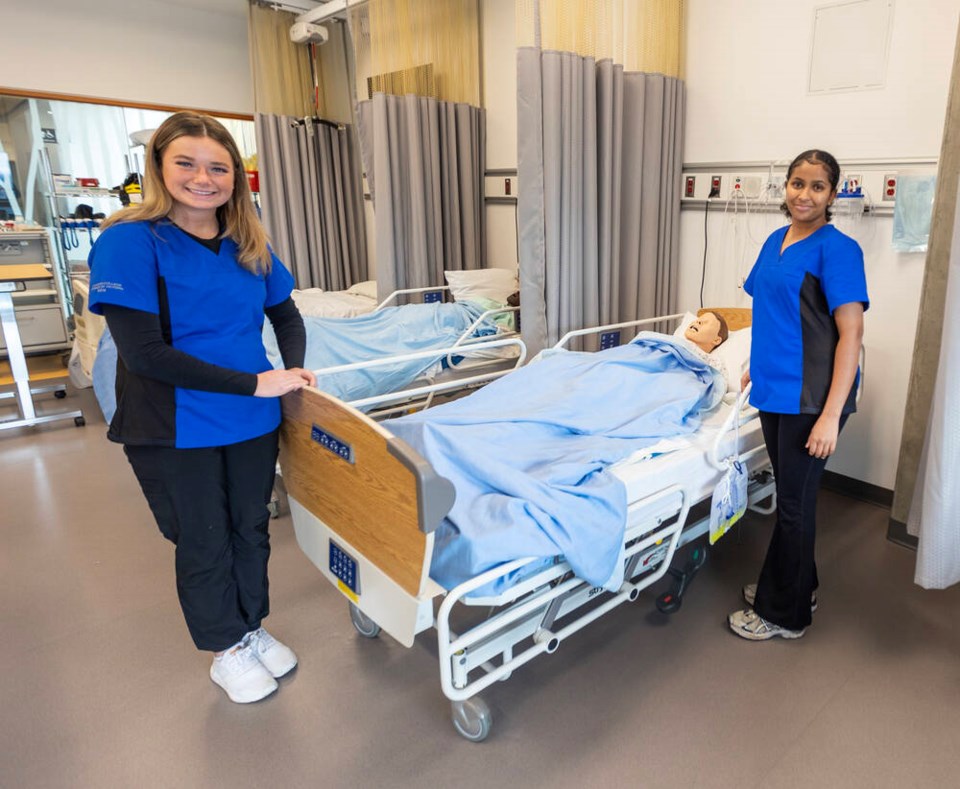Greater Victoria’s unemployment rate was 3.4 per cent in September, the lowest in Canada.
That’s a mixed blessing for the capital region — on the one hand, a tight job market brings opportunities for workers. The private sector, however, says a shortage of employees is limiting business growth.
One growth area for the capital region is health care and social assistance — 39,100 people were employed in that category in September, up from 37,100 for the same month in 2023, Statistics Canada data said.
Camosun College first-year nursing students Bella Castillo and Liwam Behre are anticipating plenty of work options after graduation. They are excited about the different specialties open to registered nurses at a time when health-care workers are in demand.
“We need nurses. We need medical health-care workers,” Behre said.
Nursing was an easy choice for Castillo, who says she’s always “really enjoyed” helping others and doesn’t like being bored. She figures nursing will keep her busy in a “go, go, go environment.”
Behre recalls as a child watching her grandfather deal with ill health and wishing she could help him — a goal nursing will allow her to fulfill.
Other Greater Victoria sectors that saw employment rise year-over-year include construction, which moved to 20,000 jobs in September from 18,700 the year prior, and manufacturing, which climbed to 9,100 jobs from 6,100 in that time frame.
Bruce Williams, chief executive Greater Victoria Chamber of Commerce, was dismayed to see public administration jobs rose to 32,300 in the capital region last month from 31,700 in the same month last year.
An increasing number of chamber members are saying: “I’m losing my employees to government,” said Williams, who argues the key to growing the workforce is immigration and ensuring newcomers’ credentials are recognized in their fields.
Job gains were also seen in the professional, scientific and technical services category, where jobs rose to 24,900 in September from 22,600 the same month a year ago.
The technology sector in Greater Victoria reported total direct revenues of close to $5.9 billion in 2023, according to a consultants study for the Victoria Innovation, Advanced Technology and Entrepreneurship Council.
Demand for workers is ongoing, said council chief executive Dan Gunn. “One of the biggest restraints to the growth of the companies in Victoria has been being able to find experienced, skilled talent.”
The sector is also experiencing technology-related employment changes, with more Greater Victoria residents working for companies not based in the region. At the same time, more local companies are employing people based elsewhere, he said.
“I’m not sure how long it will take for us to get a real sense of the true impact of all of that.”
There’s also lots of talk by big tech firms about requiring people to return to the office and cut back on remote work, he said. “I think that’s still sorting itself out.”
The study said technology firms in Greater Victoria saw a 31 percentage point increase in hybrid work arrangements last year from 2019, while office-based work arrangements declined by 41 percentage points, and remote work rose by 10 percentage points.
These days, the tech sector has a strong trend of workers wanting jobs they can be proud of, that have a purpose, meaning and impact, Gunn said.
More flexible benefits such as gym memberships is another trend the sector is seeing, he said.
Provincially, the unemployment rate moved up to six per cent in September from 5.8 per cent in August. B.C. lost 18,000 jobs last month, many part-time, Statistics Canada said.



